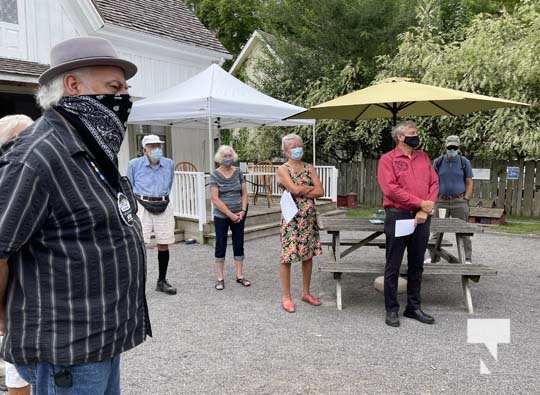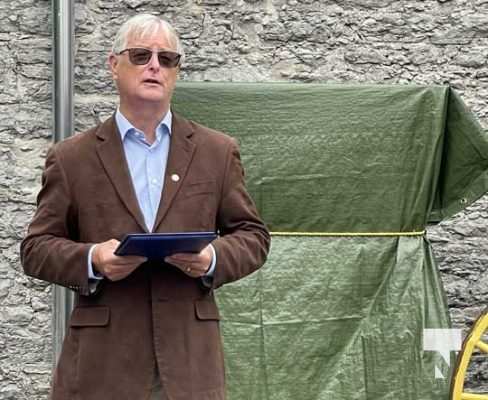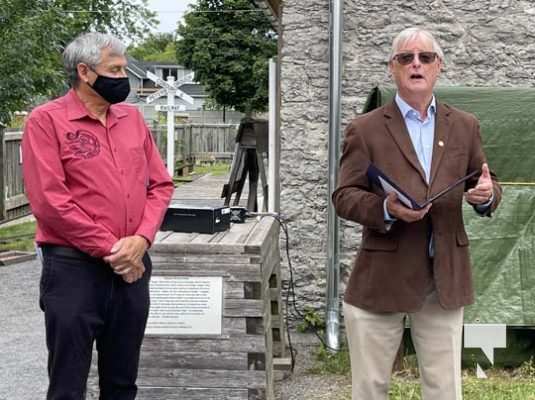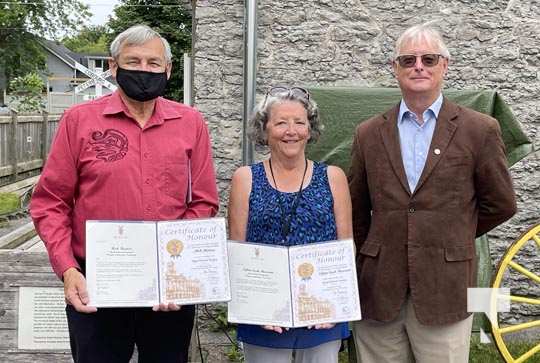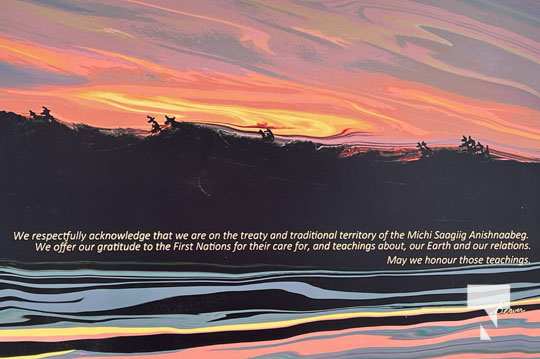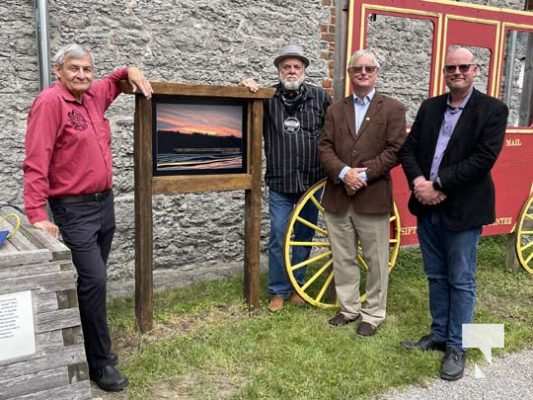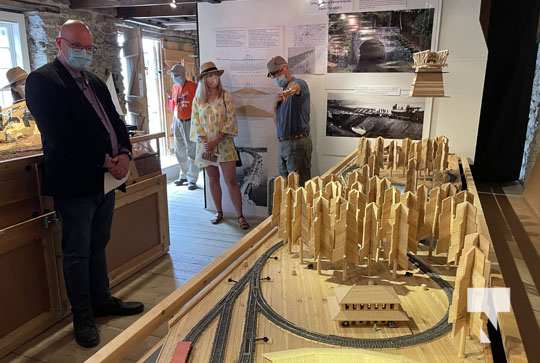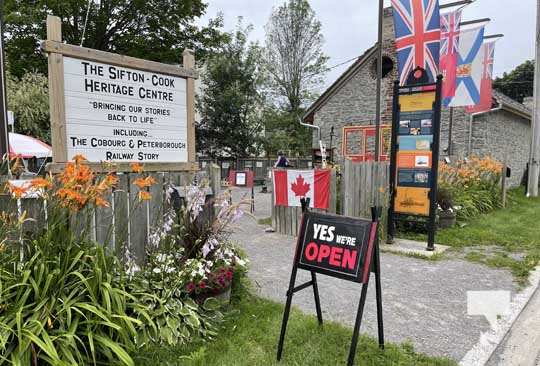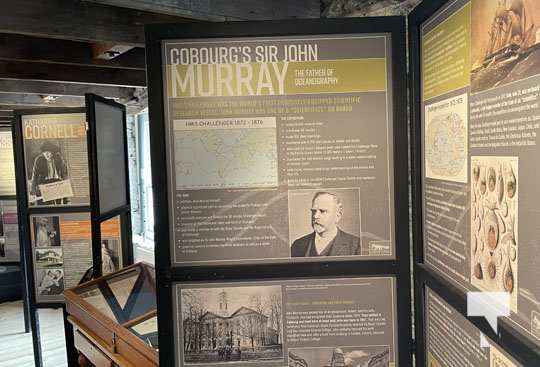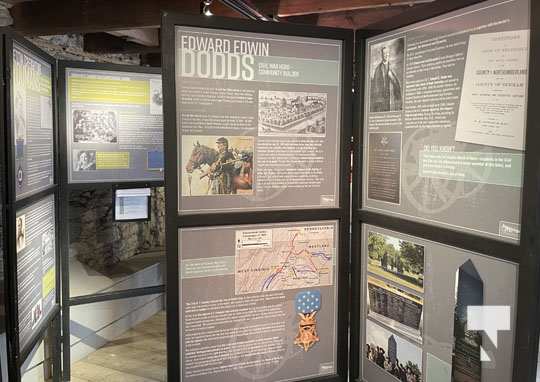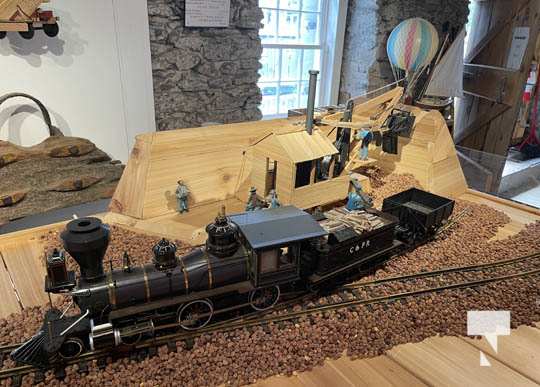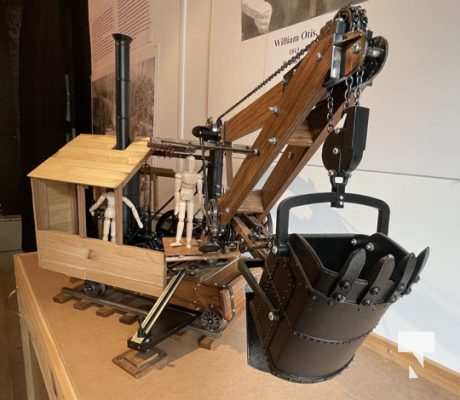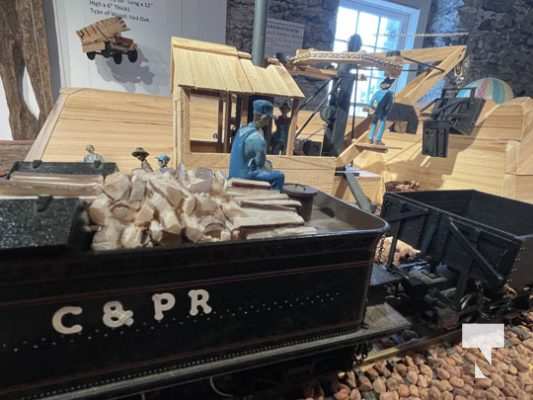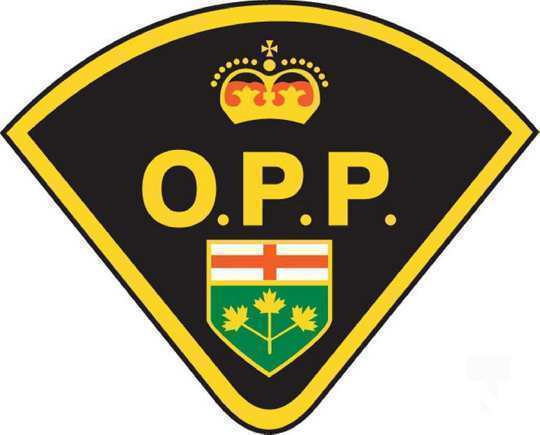By Cecilia Nasmith/Today’s Northumberland
The latest addition to Cobourg’s Sifton-Cook Heritage Centre was unveiled at a special ceremony Saturday – a framed Rick Beaver artwork that serves as a plaque of territorial acknowledgement.
As the Alderville First Nation artist explained, the piece is called White Pine Reflex-Rice Lake, with the acknowledgement running across the bottom: We respectfully acknowledge that we are on the treaty and traditional territory of the Michi Saagiig Anishnaabeg. We offer our gratitude to the First Nations for their care of and teachings about our Earth and our relations. May we honour those teachings.”
Cobourg Museum Foundation treasurer Stanley Isherwood offered some comments about how important this new addition is.
“Since the Sifton-Cook Heritage Centre opened back in 2012, I have been aware that the stories we tell aren’t just the stories of the settlers,” Isherwood said.
They have told a number of stories concerning our Indigenous community, he added, from military and sports heroes to the story of how our Mississauga brothers and sisters were relocated from the Bay of Quinte to Alderville.
“All those stories we have told over the years, but we have been slow to recognize that the land on which we exist, the place where we tell those stories of the natives and the settlers is, in a very real sense, not ours,” Isherwood stated.
“Our heritage is a long one, going back long before the arrival of the first settler. For me, that is what this day is all about.”
Chief Dave Mowat filled in the group who had gathered for the unveiling on some of that history, saying they were in the Gunshot Treaty area.
“The intent that I have learned, and is my understanding, from the shore of the water in one chain – 66 feet – and then the line was drawn for the treaty,” Mowat explained.
“Our people were to retain along the lakes and the rivers, because that is where our people were buried, that is where they harvested, that is where they camped.
“And so, over time, that strip along all the waters in our treaty areas was lost. It was encroached on and lost to the fact that the Crown did not keep its promises.”
Seeking remedy in the courts, Mowat said, their people were criticized. His response is always that they are advancing their claims based on the rule of law – the same rule of law that elects our MPs who shape the rule of law.
“These lands along the lakefront – beginning in 1783 at the Bay of Quinte, 1787 the Toronto Purchase, 1788 the Gunshot Treaty and then both Treaty 13A and then around the head of Lake Ontario – the British had a plan to create an unbroken line of settlement all along the lake Ontario frontier. So that is what they did, and it was our people’s willingness to negotiate with them that the settlers were able to come in originally to the Bay of Quinte and then all along the lakefront.
“And so that history is now one of encroachment. It is one of partnership. It is one of alliance. Our people defended Canada during the War of 1812 and, specifically, the ancestors that came to Alderville were at the Battle of Crysler’s Farm Nov. 11, 1815.
“That recognition was formalized when former Chief Marsden and myself went to Rideau Hall and accepted the Defence of Canada Medal and the flag from the Governor General – David Johnston, at that time, recognized our defence of Canada.”
Acknowledging the county councillors present, Mowat said, “We get along very well. We advance our interests mutually, so I am honoured to be participating today.”
He also praised Beaver, “who I look to as an elder, a colleague, a friend.
“The greatest part of my work was done through our black oak savanna tall-grass prairies. Rick was one of the movers and shakers. He put flesh on the bone and made it what it is.”
Unveiling the artwork, Beaver took a moment to discuss his inspiration.
“I suppose in many ways, my interest lies greatly in people’s relationship with the landscape,” he said.
“It’s so important, wherever human beings are found on our planet.”
The “main character” in his work is the white pine, a key player in what he termed “our mutual history” with harvesting and lumbering. Even the locks on the Trent Canal were designed to accommodate the width of the rafts of white-pine lumber brought down from the interior.
“We knew it as a tree of great cultural and spiritual significance. It was used in construction, in healing and the teachings about land stewardship,” Beaver listed.
“For those in attendance today fortunate enough to have white pines on your properties or in your visual diary, cherish them.”
Cobourg Museum Foundation president Mary Dunphy said they were excited to unveil the plaque they commissioned from Beaver, and to open their 2021 season.
This year’s theme is The Heinous, The Heroic and The High Flyers, and Dunphy gave examples from both ends of this spectrum.
One of Cobourg’s notorious pariahs is Dr. William King, who poisoned his wife.
“He was actually hanged here in Cobourg, and the day he was hanged, 10,000 people showed up in Cobourg for the hanging,” she said.
Then there was Sir John Murray, whose contributions to science cannot be overstated. Born in Cobourg, he ended up at the University of Edinburgh in Scotland, where his work earned him the title Father of Oceanography.
“What he did was a four-year voyage around the world on the HMS Challenger – I believe it was 1872 to 1876 – and he charted the actual oceans,” Dunphy said.
“Cobourg has an extremely rich history of individuals and contacts and things like the ferries running back and forth across the lake, and trade across the lake between Oswego and Cobourg.
“It’s got a very rich history, and so we try to pick a theme and then expand on it as much as we can each year.”
And everything, from the research behind the exhibits to greeting the visitors, is the work of volunteers – aided only by the summer student they are usually able to get to help with guiding and administrative duties.
Shortened hours for the new season are 10 a.m. to 5 p.m. Fridays and Saturdays, and 1 to 5 p.m. Sundays.
And every day at 2 p.m., don’t miss the chance to see a demonstration by George Parker, who is responsible for the model Cobourg-Peterborough Railway that circles the grounds.


